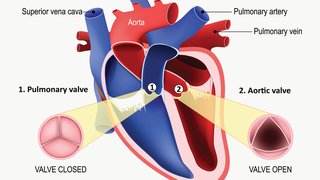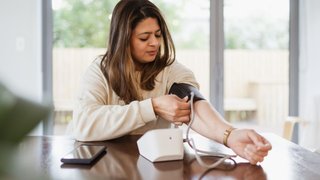Too few hearts to go around: How science can solve the organ donor dilemma
April 25, 2018

More than 3,000 heart transplants were performed in the United States last year, according to the federal Organ Procurement Transportation Network (OPTN). These 3,000-plus patients were given the gift of life through the selfless act of organ donation by individuals and families who were faced with the opportunity to make a positive impact in the wake of tragedy.
This number is amazing, considering that the first successful heart transplant was performed just slightly more than 50 years ago. Since then, the procedure has advanced to the point that it is almost considered as routine as a bypass surgery. With advances in transplant technology, more people are seeking heart transplantation, which has led to an alarming dilemma: there simply are not enough donor hearts to go around.
As of April 17, 2018, nearly 4,000 people across the U.S. are on the waiting list for donor hearts, including 400 Texans, according to OPTN data. Unfortunately, a significant number of patients die before suitable donor hearts become available for transplantation. To meet this ever-growing need, we must continue to seek new and advanced procedures and treatments for heart failure and continue to impress upon healthy community members how truly life-changing the gift of organ donation can be for recipients.
The future of heart transplantation
We have at our fingertips the potential means to one day treat heart failure without transplantation. While these discoveries are in their early stages, initial progress is promising that eventually cardiologists will solve the donor heart dilemma.
Left ventricular assist device (LVAD)
The most promising therapy to potentially ease the shortage of donor hearts – or in the future, replace transplantation entirely – is the left ventricular assist device, or LVAD. This is a mechanical pump that supports functionality in the left side of the failing heart by being surgically implanted just below the heart with a driveline that goes through the skin and connects to its external power source and controller. Many patients achieve a substantially improved quality of life with LVAD therapy.
Today, heart surgeons implant LVADs in patients with heart failure who are awaiting a donor heart or who have severe heart failure but are not candidates for transplantation. These devices are technological marvels, though they do come with unique challenges:
- LVADs are not fully implantable in the heart. Patients must take precautions with the driveline that exits the body and protect it from damage or infection.
- Patients must carry equipment wherever they go. LVAD therapy requires patients to carry a battery and a system controller (computer which controls the LVAD). However, today’s LVADs are fairly discrete compared to the first models, which were large and bulky.
- LVADs require constant access to power sources. The devices run off of batteries or electricity, which requires patients to carefully plan for travel.
- Current LVADs are associated with a number of complications. Such complications include strokes, gastrointestinal bleeding, and right heart failure. Improvements are being made with LVAD technologies but we still need further advances.
While LVAD therapy is proven to prolong the lives of patients with heart failure, it’s still a relatively new technology that cannot yet replace heart transplantation. However, the field is moving quickly. If I had to bet on one technology that could one day replace transplantation, it would be LVAD.
Xenotransplantation
Another exciting innovation in motion is xenotransplantation, or transplanting animal hearts into humans. This has gained momentum in recent years, including a research study in which a pig heart was successfully transplanted into a baboon that lived longer than two years. When we become capable of transplanting pig hearts into humans, the availability of donor hearts hypothetically could be unlimited.
However, xenotransplantation has its hurdles. Immunological differences between humans and pigs leading to organ rejection are complex to overcome. Genetic modification to alter pigs’ hearts to avoid the immunological differences could be the answer, but it’s still a work in progress. Ethical factors also factor into the development of this procedure.
Myocardial regeneration
While we’re still very early in this therapy, myocardial regeneration is a fascinating development. This procedure could help cure heart disease by stimulating or delivering stem cells to encourage regeneration of the heart muscle. Researchers are in the process of determining which cell types should be used in cellular therapy, and we’re still learning how to re-introduce cells into heart tissue for long-term survival. Perhaps even more promising is work underway to coax heart cells, which normally do not divide (reproduce) after birth, into dividing again and replenishing the supply of contracting cells in the heart.
Gene therapy
Another potential alternative to reverse heart failure is gene therapy. This is the process of introducing a new gene to the heart to correct some underlying abnormality in the heart muscle cells. Gene therapy is in the very early stages of research, and it’s not ready for clinical use.
The heart of the matter: Organ donation truly is the gift of life
Organ donation can transform the lives of recipients in an incredibly positive way, giving people who are otherwise going to die the chance to:
- Raise their children or grandchildren
- Participate in favorite activities they thought they’d never enjoy again
- Rejoin the workforce for a decade or longer
Organ donation can be just as life-changing for the families of donors. When faced with tragedy, it can be incredibly difficult to make the decision to donate a loved one’s heart or other organs. However, the vast majority of families with whom I meet find a sense of comfort in doing so. I remember one family whose young son was involved in a vehicle accident. The individual’s family was willing to donate organs and felt that doing so provided solace – something good from an otherwise sorrowful time.
We’ve also seen cases in which family members were unsure whether to donate a loved one’s organs, being uncertain of the deceased’s preferences. Frankly, some people are uncomfortable talking proactively about their wishes should tragedy strike; however, just as it’s important to draft a living will or plan for end-of-life care, it’s important to discuss your preferences for organ donation with your loved ones. Doing so will help them feel more confident about honoring your wishes if something unexpected happens.
Today, despite the challenge of a donor heart shortage, transplantation is the most effective, longest-lasting therapy for advanced heart failure. But as we look to the future, current therapies will be refined and novel therapies will be developed that could one day eliminate the need for heart transplantation. Until then, I encourage everyone to consider giving the gift of life through organ donation.

We’re one of the world’s top academic medical centers, with a unique legacy of innovation in patient care and scientific discovery.

Patients can sign up to be a transplant donor with Donate Life or through their local Department of Motor Vehicles (DMV).

William P. Clements Jr. University Hospital
Designed to enhance the experience of our patients and their families by delivering safe, effective, and compassionate care to all.











